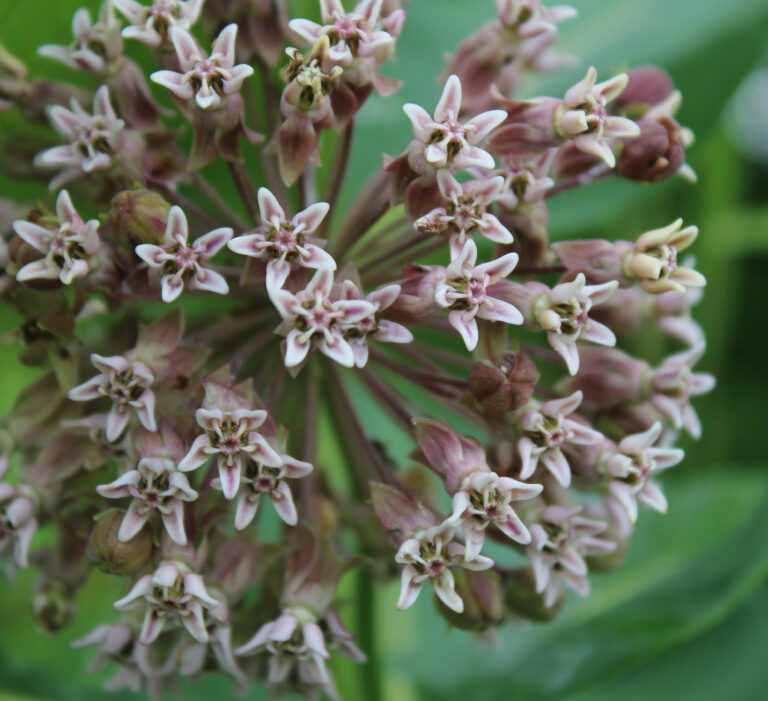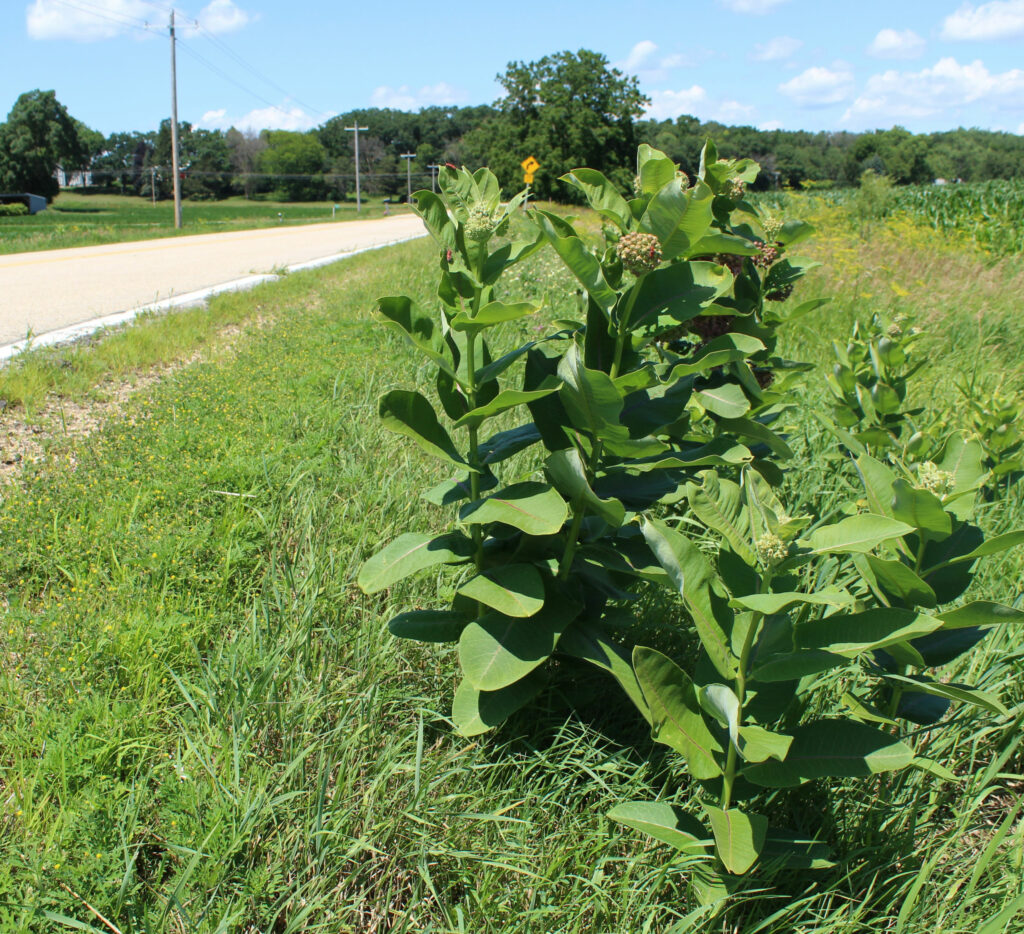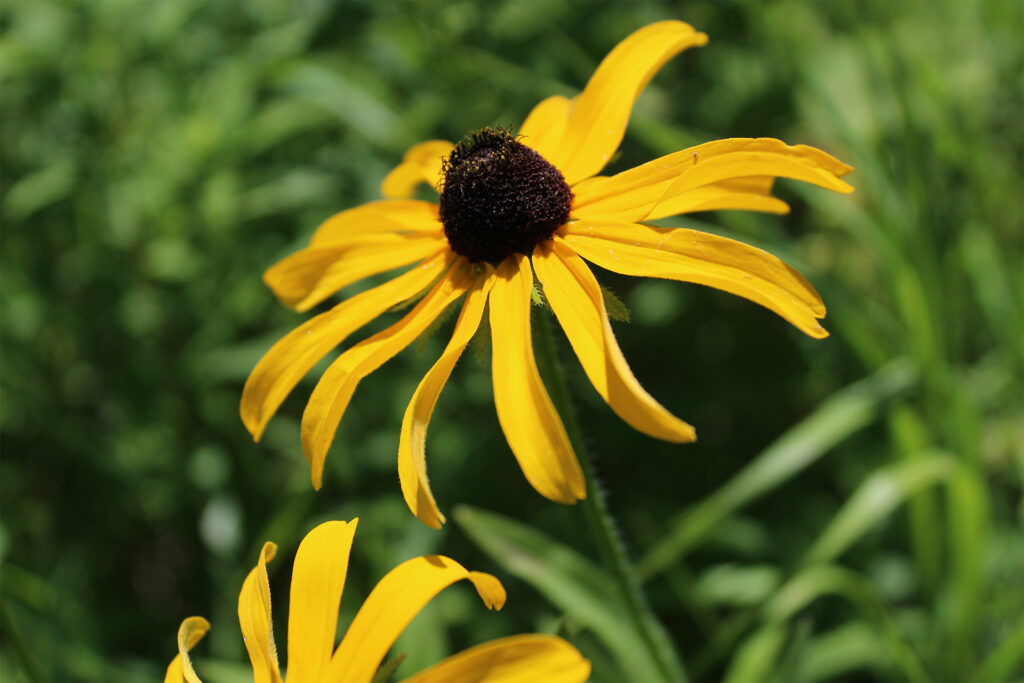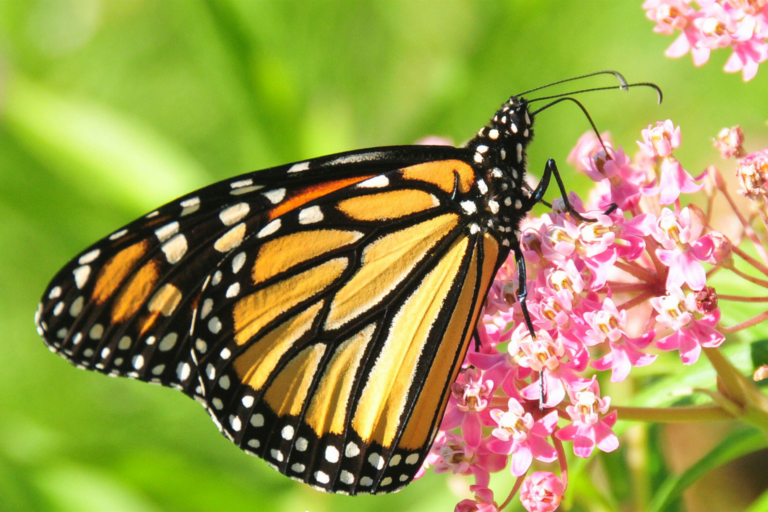Photo by Peter Miller
Creating habitat is the most important action you can take to support monarchs. No matter how much space you have, from a tiny balcony garden to hundreds of acres, you can create habitat for monarchs.
Many factors have contributed to declines in monarch populations: habitat loss, climate change, and pesticide use all play a role. By planting native milkweed and nectar plants, we can increase habitat available to breeding monarchs and provide refuge from extreme weather conditions. You can also improve monarch habitat by reducing the use of pesticides, cutting back on mowing, and providing windbreaks.

Photo by Anna Brose
Monarchs are milkweed specialists; they only lay their eggs on milkweed, and it is the only plant the monarch caterpillars can eat. In Wisconsin, we have 12 native milkweed species, but some of them are very rare and not readily available for planting.
The best time to plant milkweed seeds is November and December. It’s best to scatter seeds when the ground isn’t covered with snow, so that the seeds can have good soil contact and lie under a moist blanket of snow all winter. This is because in Wisconsin, most native plant seeds require a prolonged period of cold before they will germinate and grow (think of how the seeds naturally drop to the soil in the fall and sit through the freezing temperatures of winter before germinating in spring). Milkweed plants prefer sunny areas, so choose a location that has at least 6 hours of full sun per day. For small areas, you can also plant seedlings (small plants) in the spring. Be sure to work them into the soil.
For information about where to find native milkweed seeds or seedlings in your area, check out the Xerces Society’s Milkweed Seed Finder, or Monarch Watch’s directory of milkweed vendors.

Photo by Anna Brose
Nectar plants are flowering plants that produce nectar. Monarch butterflies rely on nectar for food, so all monarch habitat should have native wildflowers blooming the entire time that monarchs are in the state, usually from the end of April or early May through September. Because most plants don’t stay in bloom for that whole time, good monarch habitat contains a variety of native nectar plants, which bloom at different times throughout the spring and summer.
For information about where to find native plant seeds or seedlings in your area, please refer to the Wisconsin Native Plant Nurseries publication.

Photo by Anna Brose
Monarch habitat should have little to no exposure to pesticides. Widespread herbicide use can eliminate the milkweed and nectar plants the monarchs need for food, and insecticides can kill or sicken the monarchs themselves. Be sure to ask your nursery about pesticide use before purchasing plants for your garden.
Cut back on mowing, especially from June through September when monarchs are breeding and laying eggs or when caterpillars are present, because it reduces breeding habitat and causes direct mortality.
Monarchs benefit from wind breaks and sheltered areas that they can use to pupate and turn from a caterpillar to an adult or use for roosting during migration. Note that not all monarchs pupate on windbreaks or sheltered areas.

Photo by Tom Koerner/USFWS
For more information on creating monarch habitat in Wisconsin, visit our Resources Page